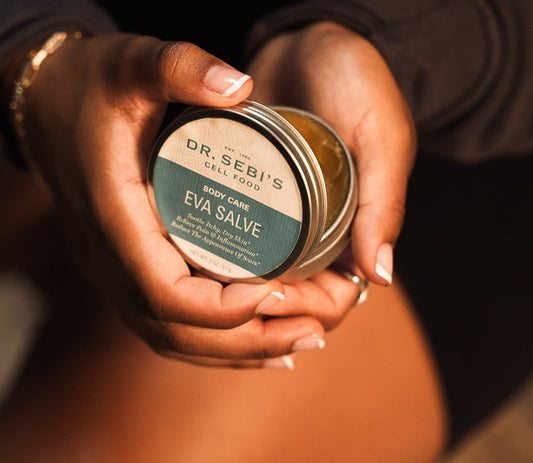What if we told you that the life you truly want is within your reach? It’s true! The journey starts with the powerful act of setting clear, focused intentions. By aligning your thoughts and actions with your values and aspirations, you can create a solid foundation for personal growth and transformation.
However, setting intentions isn’t about wishful thinking or waiting for change to come to you. Instead, it’s about actively making the decisions and taking the steps needed to build the habits that support your best life. Here’s how to set intentions that empower you to take action and create lasting change.
What Does “Setting Intentions” Mean?
Setting intentions is the practice of consciously deciding what you want to create or achieve in your life. Unlike when you set goals or New Year’s Resolutions, which are often focused on measurable outcomes, setting intentions requires aligning your thoughts, emotions, and actions with your desired future.
Two key components of intention setting are mindfulness and visualization, which help you stay mindful and present, creating a life that reflects what truly matters to you.
Benefits of Setting Intentions
Setting intentions offers clarity and focus, helping you make decisions that align with your priorities. It encourages mindfulness, reduces stress, and promotes positive habits. Over time, this intentional approach leads to personal growth, improved resilience, and a deeper sense of purpose.
By aligning your actions with your intentions, you can build a life that feels authentic and fulfilling. Intentions aren’t just about what you hope for—they’re about the steps you take every day to create meaningful change. It helps you stay motivated.
How to Set Intentions Effectively
Setting intentions is a powerful tool, but to truly harness its transformative power, it's important to approach it with clarity and purpose. Here’s how to set and support your intentions effectively.
1. Decide What You Truly Want From Life
Ask yourself: What truly matters to me? Consider your values, passions, and the areas of your life where you’d like to see growth. This self-reflection helps ensure that your intentions are rooted in what’s most important to you.
2. Be Clear About Your Intention
Intentions should focus on actions you can take, rather than vague ideas. For example, instead of saying, "I want to be healthier," set an intention like, "I will eat more whole, alkaline foods and exercise three times a week."
3. Keep It Simple and Positive
Keep your intention simple, concise, and framed in a positive light. Instead of focusing on what you don’t want, such as “I don’t want to feel stressed,” reframe it as “I meditate every morning to feel calm and centered.”
Positive intentions are more likely to attract positive results because they keep your focus on what you want, rather than on what you’re trying to avoid. Plus, positive affirmations can help improve mood, reduce stress, and help maintain a hopeful outlook.
4. Write It Down
Writing your intention down solidifies your commitment to it and makes it more tangible. Studies have found that people who write down their goals are more likely to achieve them. When you write your intention, you create a physical reminder that you can refer to daily. A vision board is a great activity for setting intentions.
5. Start Small & Be Consistent
Building better habits takes time. Start with small, manageable steps that you can incorporate into your daily routine. Consistency is key to turning intentions into lasting habits.
6. Make It a Daily Habit
Consistency is key when it comes to setting intentions. By making it part of your daily routine, you reinforce your focus and keep your intentions aligned with your goals. Incorporating this habit into your routine—such as stating your intention each morning—builds momentum and helps turn your intention into a part of your day-to-day life.
Remember, life evolves, and so should your intentions. Take time to reflect on your progress and adjust your intentions as needed to stay aligned with your goals.
7. Get Rid of Limiting Beliefs
Limiting beliefs—a deeply held thought that restricts your potential, often based on fear or past experiences—can act as roadblocks on your path to achieving your intentions. Thus, it’s crucial to identify and eliminate any negative self-talk or beliefs that may hinder your progress.
Consider these examples:
- “I’ll never be rich,” can become “I am open to new opportunities that bring financial abundance.”
- Instead of “I’m not good enough to succeed,” remind yourself of past successes and skills you’ve developed.
- “I don’t deserve happiness or success,” can become “I am worthy of love, success, and joy.”
- “I’ll never be able to change,” can become “Change is a gradual process, and I am taking small, incremental steps to achieve my goals.”
- If you’re thinking, “I’m too old/young to achieve my dreams,” tell yourself, “Age is just a number. Many people achieve great things at all stages of life.
8. Review and Revise Regularly
Setting intentions is an ongoing process, not a one-time task. Life is constantly changing, and as you grow and learn, your needs and aspirations may shift. Regularly reviewing and revising your intentions helps ensure they stay aligned with your evolving goals and desires.
Make it a habit to reflect on your intentions regularly, checking in with yourself to see if they still resonate with you. If not, don’t hesitate to adjust them to reflect your current desires and vision.
For example, if your initial intention was to lose weight, but you’ve since realized that overall health is more important to you, adjust your intention to reflect that shift. This process of refinement keeps your intentions relevant, allowing you to continue building your best life.
9. Take Action!
The final and most important step is to take action. Setting intentions without action is like planting a seed and never watering it. Intentions require consistent effort and steps toward realization.
If your intention is to start a new career, take small steps like updating your resume, researching job opportunities, or networking. Action transforms your intention from a mere thought into a tangible result. Research shows that individuals who take consistent, purposeful action are more likely to achieve their goals, as it bridges the gap between intention and reality.
Examples of Intentions You Can Set
Not sure where to start? Below are several examples that can help inspire you to figure out what you want and how to set an effective intention around it. Remember to make them active and in the present tense, rather than saying, “I will…”
Health and Wellness
- "I prioritize my physical and mental health by exercising daily."
- "I nourish my body and mind with whole, alkaline foods every day."
- "I get 8 hours of restful sleep each night to improve my overall well-being."
Personal Growth
- "I practice gratitude every morning to cultivate a positive mindset."
- "I read one personal development book each month to expand my knowledge."
- "I am patient and compassionate with myself and others."
Career and Professional Development
- "I advance my career by taking on new projects and responsibilities."
- "I network with like-minded professionals to create new opportunities."
- "I stay focused and productive during work hours to achieve my professional goals."
Relationships
- "I communicate openly and honestly with my loved ones."
- "I make time for meaningful connections and build deeper relationships."
- "I am present and mindful during family time."
Financial Goals
- "I save 20% of my income each month to build my savings."
- "I have a budget and stick to it to manage my finances more effectively."
- "I invest in my financial education to grow my wealth."
Self-Care and Relaxation
- "I take 30 minutes each day for self-care to recharge and reduce stress."
- "I practice mindfulness through daily meditation or deep breathing exercises."
- "I disconnect from technology for one hour each evening to relax and unwind."
Spirituality and Inner Peace
- "I meditate daily to cultivate inner peace and clarity."
- "I deepen my spiritual practice by attending weekly services or reflections."
- "I embrace gratitude and stay connected to my higher self."
Creativity and Hobbies
- "I set aside time every week to pursue a creative hobby, like painting or writing."
- "I will complete a personal project or creative goal by the end of the month."
- "Iexplore new hobbies that inspire joy and creativity."


















































